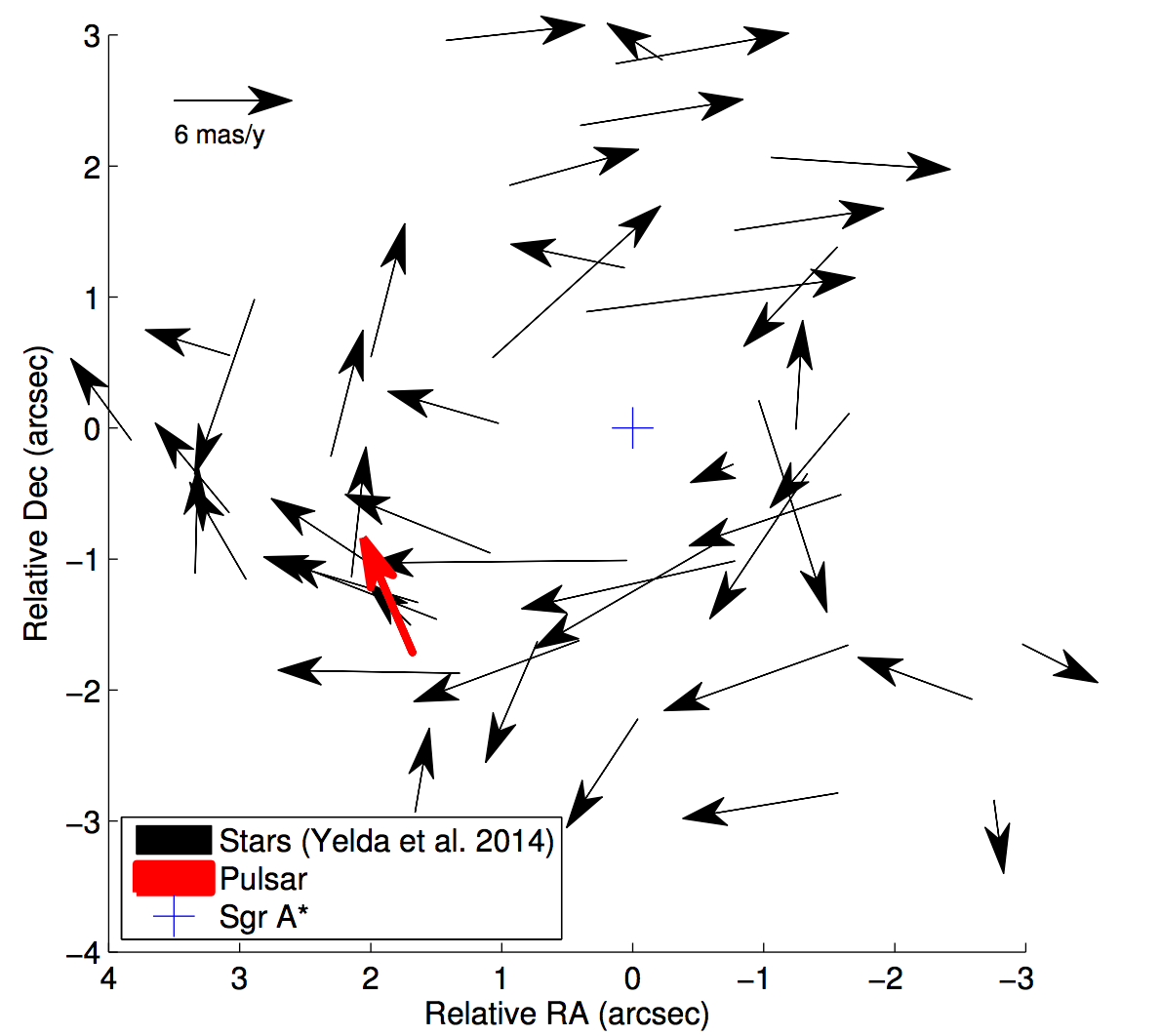Daily Image
20-11-2014The lonely life of PSR J1745-2900
| Submitter: | Adam Deller |
| Description: | Radio pulsars are born in the supernova explosions that dramatically mark the death of massive stars. The Galactic Centre environment is teeming with massive stars, which means it should also be teeming with pulsars; an important fact, because a radio pulsar in the vicinity of the supermassive black hole at the Galactic Centre (Sgr A*) could be used to make unbelievably precise tests of general relativity. Finding these pulsars, however, has been frustrated by the presence of some very turbulent ionised gas somewhere between us and the Galactic Centre which scatters radio waves and smears out the characteristic radio pulsations - especially at the low frequencies where pulsars are bright. A major breakthrough came in 2013, with the discovery of the magnetar PSR J1745-2900, separated from the supermassive black hole by just a fraction of light-year in projection. Magnetars are relatively rare, highly magnetised neutron stars which are unfortunately not well suited to the kind of tests we would like to perform at the Galactic Centre. It did serve, however, as the bearer of bad news: the scattering of pulses originating from pulsars at the Galactic Centre was not nearly as bad as suspected. On first glance, this sounds positive: easier to observe the target pulsars! But it begs the question: if they weren't being hidden by scattering, where *are* all these other pulsars? If our expectations are wrong and there are actually few pulsars at the Galactic Centre, then we may never find one suitable to make the precise tests of general relativity. To help answer this question, we observed PSR J1745-2900 over a period of a year with the Very Long Baseline Array plus the phased VLA, tracking its motion in the plane of the sky. The tiny motion observed was equivalent to seeing an ant crawl across a leaf from a distance of 1,000 km! The pulsar velocity is shown in the image in red, along with the velocity of a sample of other massive stars which orbit Sgr A* in a compact disk in black. By simulating the stellar population, we were able to show that PSR J1745-2900 is almost certainly bound to Sgr A*, and likely originated in the disk of stars shown in the image. We postulate that the lack of observed radio pulsars could be due to a time-variable star formation rate at the Galactic Centre, which has recently increased significantly after a long dip; older radio pulsars from previous periods of high star formation have faded away, and new ones are only just now being generated. "Millisecond" radio pulsars with much longer lifetimes would still be present in droves, but even the relatively limited amount of scattering we observe means they would still have been missed by previous surveys. Future, wide bandwidth surveys, and potentially those with the Square Kilometre Array, may still detect these fast pulsars. More details are given in our recently accepted paper. |
| Copyright: | Bower, O'Leary et al. |
| Tweet |  |
